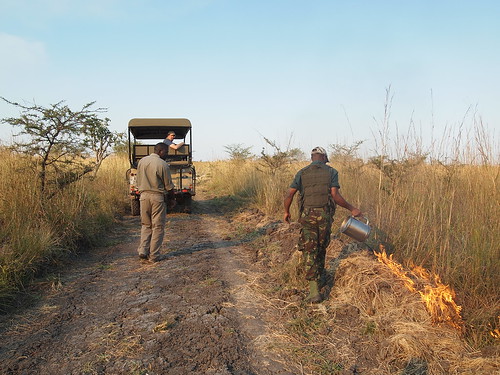
Managing wildland fire is pretty much the same anywhere in the world. You need to think carefully about when and where to apply it and how to starve the fire of fuel in places you don’t want it. There are several ways to do it—but you need to know how.
As a U.S. Forest Service fire applications specialist, managing wildfire, monitoring ecosystem response and teaching others how to do so has been Tonja Opperman’s job for years. She is so good at it that recently the Forest Service International Programs invited her to teach fire monitoring in Zambia’s Kafue National Park.
“Kafue is a largely undiscovered national park more than twice the size of Yellowstone, and although the ecosystem is relatively intact, the Zambian Wildlife Authority overseeing its management has precious few resources to commit to projects,” said Opperman. “It was a privilege to work with local ecologists and fire managers to help Kafue move another step closer to implementing a landscape strategy for dealing with unwanted fire.”
As a lead with the Forest Service’s Wildland Fire Management Research Development and Application Unit, Opperman partnered with The Nature Conservancy and taught Kafue park employees techniques for fireline and post-burn monitoring, use of equipment, ignition pattern techniques and fire-briefing standards during classroom exercises before going out to the field to conduct live-firing exercises.
Fire plays a key role in the maintenance of a healthy Kafue ecosystem and managers are well-versed in its use. Although there is not a desire to eliminate fire here, there is a need to control the time of year it burns. This is done by purposely igniting fires just after the wet season, removing most of the fuel before the land really dries out. Early-season fires, when the ground is still wet, have few negative ecological effects; however the dry-season fires tend to burn intensely and uncontrollably. This pattern is significantly reducing shrub cover across Kafue, which provides essential wildlife habitat.
The skills Opperman brings to Zambia will be of important use in the years to come as local and international tourists visit the park to see lions, elephants, kudu and impala in a beautiful landscape mosaic borne of (the right kind of) fire.
